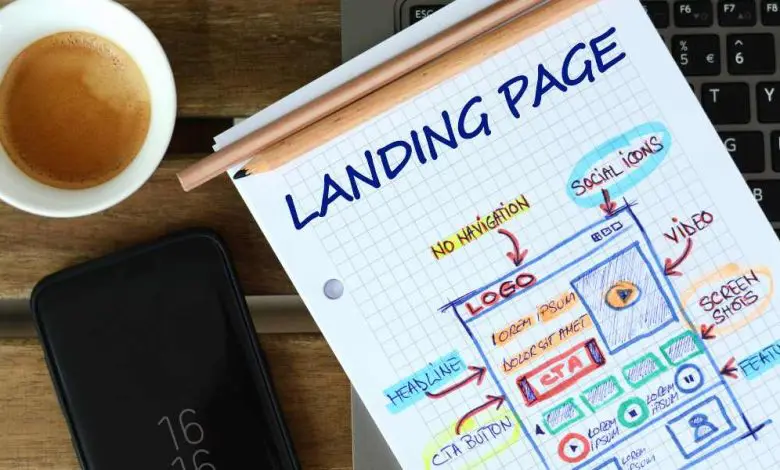Mastering the Perfect Landing Page: Your Guide to Higher Conversions
Mastering the Perfect Landing Page: Your Guide to Higher Conversions

Creating a landing page that converts is an art and science combined. It’s a process of understanding your audience, identifying their needs, and strategically presenting your solution in a way that compels them to take action. If you’re looking to boost conversions for your business, mastering the perfect landing page is critical. This guide will walk you through the key elements that can transform a standard page into a conversion-optimized powerhouse.
What Is a Landing Page?
Before diving into optimization, it’s essential to understand what a landing page is. A landing page is a standalone web page created specifically for marketing or advertising purposes. It’s where visitors “land” after clicking a link in an email, ad, or social media post. Unlike other pages on your website, landing pages focus on a single goal: converting visitors into leads or customers.
The main goal of a landing page is to convert by capturing user information through a form or encouraging immediate action, such as a purchase or signup. A well-designed landing page can significantly increase your conversion rate, turning potential leads into loyal customers.
Why Is a Landing Page Important for Conversions?
Your landing page is often the first impression potential customers have of your brand. Its design, content, and user experience can determine whether a visitor will stay and engage or leave in frustration. A high-converting landing page is designed with intent, keeping users’ needs and behaviors in mind. Its sole purpose is to convert visitors, making it a crucial part of any online marketing strategy.
Landing pages eliminate distractions by removing navigational elements that might tempt users to wander off to other parts of your website. They encourage users to focus on a singular action, such as filling out a form or purchasing a product. This sharp focus is what helps drive higher conversion rates.
The Key Elements of a High-Converting Landing Page
Creating the perfect landing page requires attention to detail and a strategic approach. The following elements are the foundation for designing a landing page that converts.
1. Compelling Headline
Your headline is the first thing visitors see when they land on your page. It needs to grab attention and instantly communicate the value proposition of your offer. A good headline is clear, concise, and speaks directly to the visitor’s pain points or desires.
- Be Clear: Avoid vague or overly clever headlines. Your message should be immediately understood.
- Highlight Benefits: Focus on what the visitor will gain from engaging with your page, rather than just the features of your product or service.
Example: “Unlock 50% More Leads with Our Proven Marketing Software” is more effective than “Try Our Marketing Software.”
2. Persuasive Copy
Once you have their attention with the headline, the next step is to convince visitors that your offer is worth their time. Your copy should explain the benefits of your product or service clearly, while guiding visitors toward conversion.
- Focus on Benefits: Describe how your solution will improve their life or solve a specific problem. Instead of talking about what your product does, explain why it matters to the user.
- Keep It Simple: Avoid long paragraphs or overly technical jargon. Use bullet points, subheadings, and short paragraphs to keep the content scannable.
- Use Emotional Triggers: Understand your audience’s emotions and tap into their desires, fears, or frustrations.
3. Eye-Catching Visuals
Visuals play a vital role in grabbing attention and keeping users engaged. A landing page without images or videos often feels incomplete and lacks appeal. The right visuals can enhance the messaging of your copy and showcase your product in action.
- High-Quality Images: Use professional, relevant images that align with your brand and message.
- Explainer Videos: A short video can dramatically improve conversions by explaining complex ideas quickly.
- Consistency: Ensure that your visuals align with the overall theme of your marketing campaign and target audience.
4. Strong Call to Action (CTA)
The call to action (CTA) is arguably the most critical element of your landing page. The CTA is what guides visitors to take the desired action, whether that’s filling out a form, making a purchase, or signing up for a newsletter.
- Use Action-Oriented Language: Phrases like “Get Started Now,” “Claim Your Free Trial,” or “Download the Guide” motivate users to take immediate action.
- Make It Stand Out: The CTA button should be highly visible, with contrasting colors that make it pop on the page.
- Limit Choices: Avoid presenting multiple CTAs or offers on a single landing page, as this can confuse visitors and reduce conversions.
5. Trust Signals
Trust signals help reduce anxiety for visitors and make them more comfortable taking the next step. These can be anything that reassures visitors that your product or service is legitimate and that they’re making a safe choice by engaging with your business.
- Customer Testimonials: Social proof in the form of reviews, testimonials, or case studies can help establish credibility and trust.
- Security Badges: If you’re collecting personal information, displaying security badges from companies like Norton or McAfee can reduce hesitation.
- Media Mentions or Certifications: Showcasing logos of media outlets or industry certifications can further build trust.
6. Mobile Optimization
With the majority of web traffic coming from mobile devices, ensuring your landing page is optimized for mobile users is non-negotiable. If your page doesn’t load quickly or is difficult to navigate on a smartphone, you risk losing a large portion of potential conversions.
- Responsive Design: Make sure the layout adjusts seamlessly to different screen sizes.
- Fast Loading Times: Pages that load slowly can lead to high bounce rates, especially on mobile devices.
- Simple Forms: If your goal is lead generation, make sure your form is easy to fill out on mobile. Reduce the number of required fields to encourage more submissions.
7. A/B Testing
One of the most effective ways to improve conversion rates is by A/B testing different elements of your landing page. This process involves creating two versions of your page and testing which one performs better based on a specific goal.
- Test Different Headlines: Sometimes a slight change in the headline can significantly affect conversions.
- Test CTA Placement and Design: Experiment with different colors, sizes, and positions for your CTA buttons.
- Test Copy and Visuals: Small adjustments to your copy or images can impact user engagement and conversion rates.
8. Simplicity and Clarity
A landing page cluttered with information, images, or links can overwhelm visitors and lead to higher bounce rates. Simplicity and clarity are essential for guiding users toward your desired action.
- Minimal Distractions: Remove unnecessary navigation, sidebars, or external links. Keep the visitor focused on the CTA.
- Whitespace: Don’t be afraid to leave empty space on your landing page. It allows key elements to stand out and prevents information overload.
The Importance of Analytics
Monitoring your landing page’s performance is crucial to understanding what’s working and what isn’t. Tools like Google Analytics, Hotjar, or heat maps can provide insights into user behavior, allowing you to make informed decisions.
- Track Conversion Rate: Measure the percentage of visitors who take the desired action on your landing page.
- Analyze User Behavior: Understand where users are clicking, how far they scroll, and what elements may be causing friction.
- Monitor Page Load Speed: A slow-loading page can lead to drop-offs, so it’s essential to keep load times under 3 seconds.
Conclusion
Mastering the perfect landing page isn’t about following a strict formula but rather understanding the psychology of your audience and how to lead them through a seamless user experience. From a compelling headline and persuasive copy to a strong call to action and trust signals, each element must work together to convert visitors into leads or customers.




